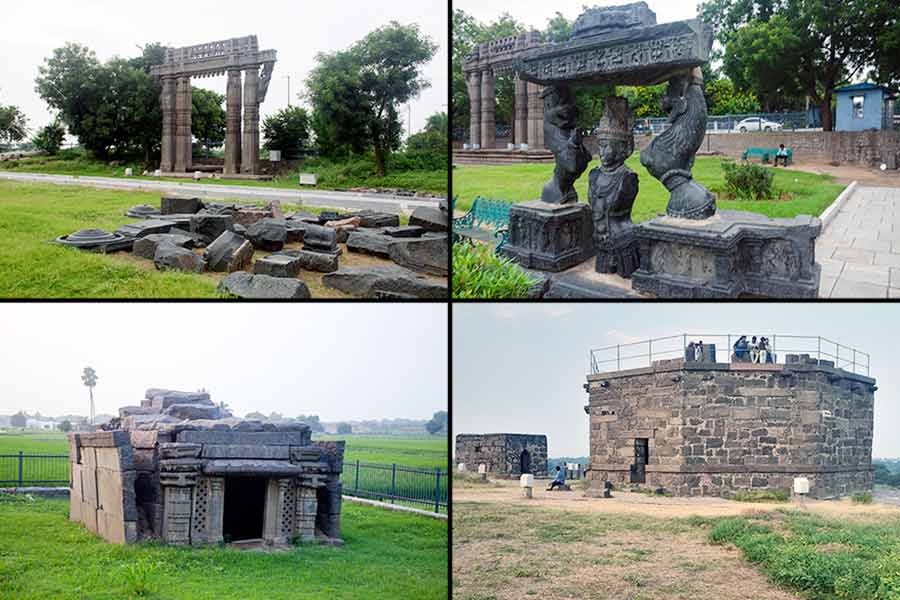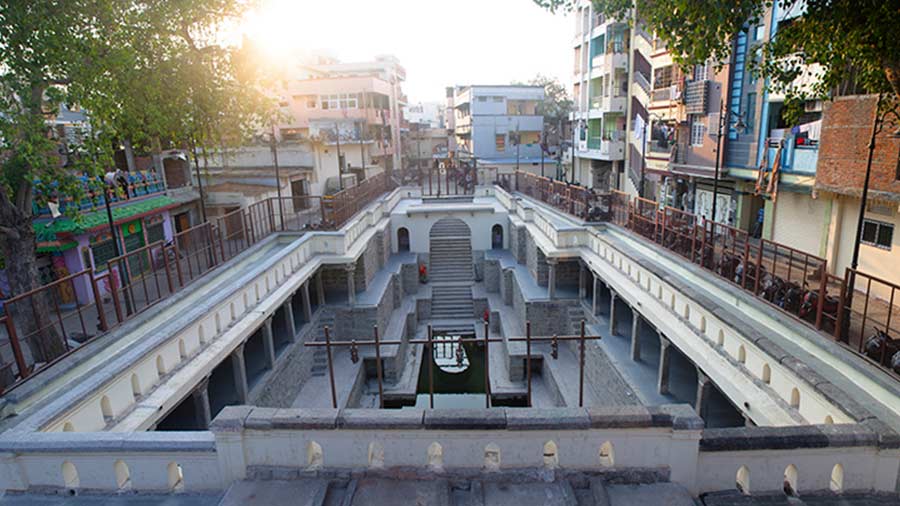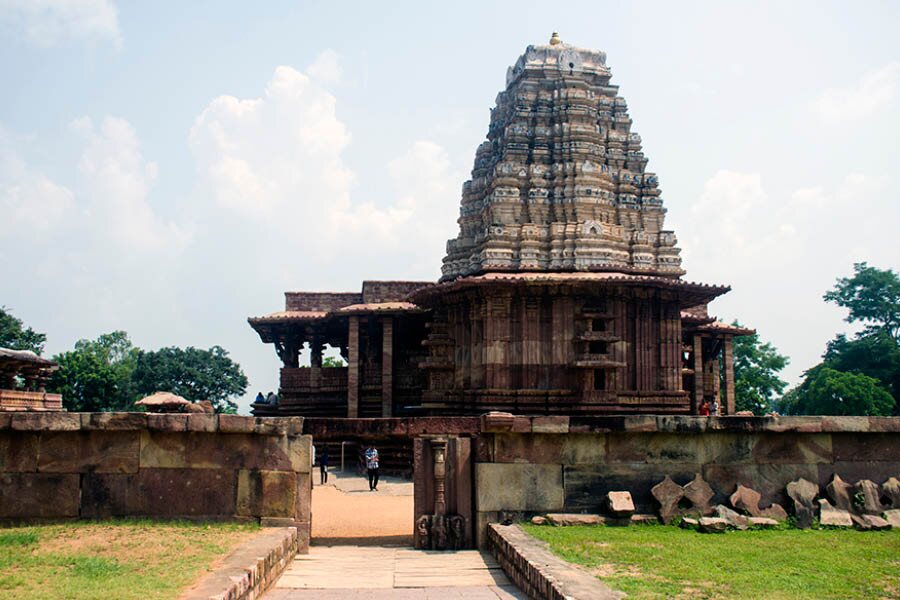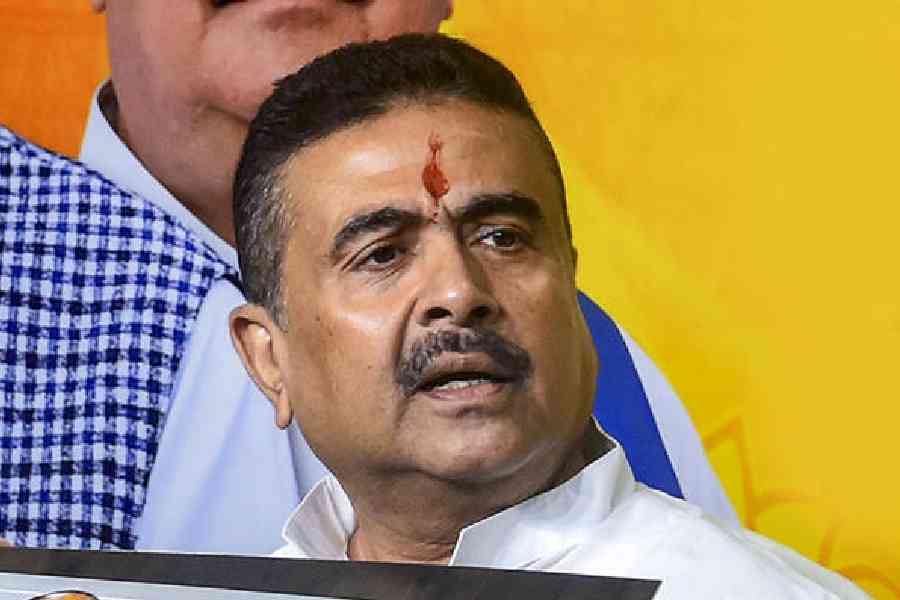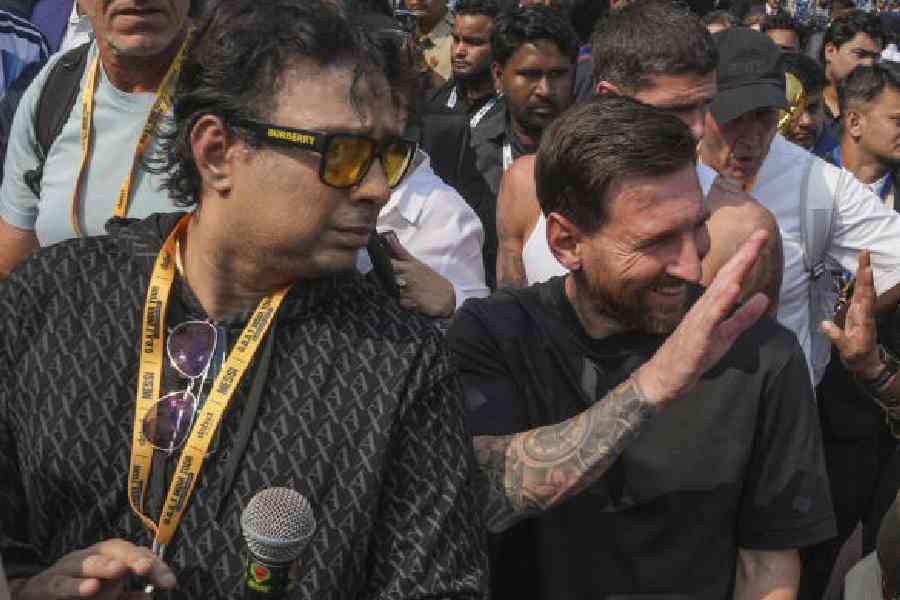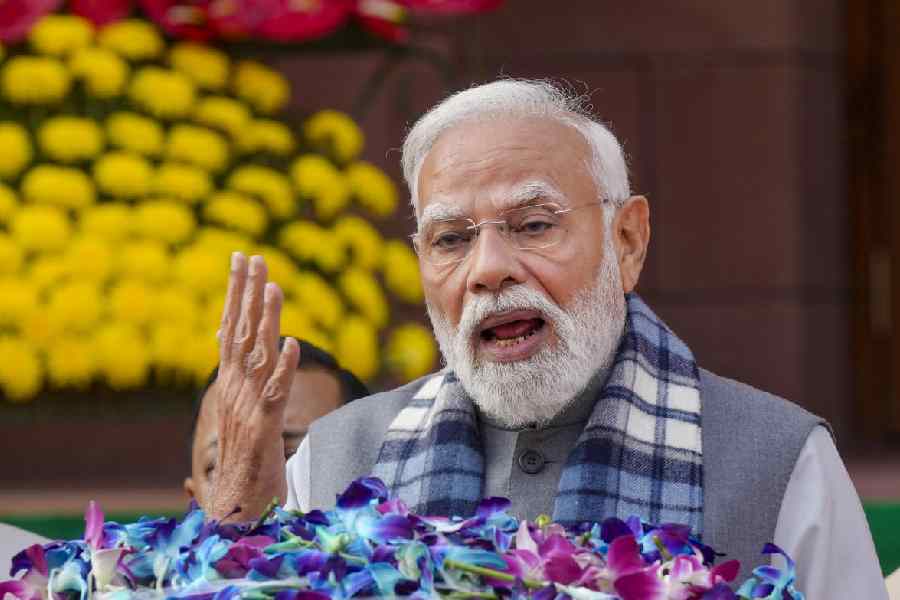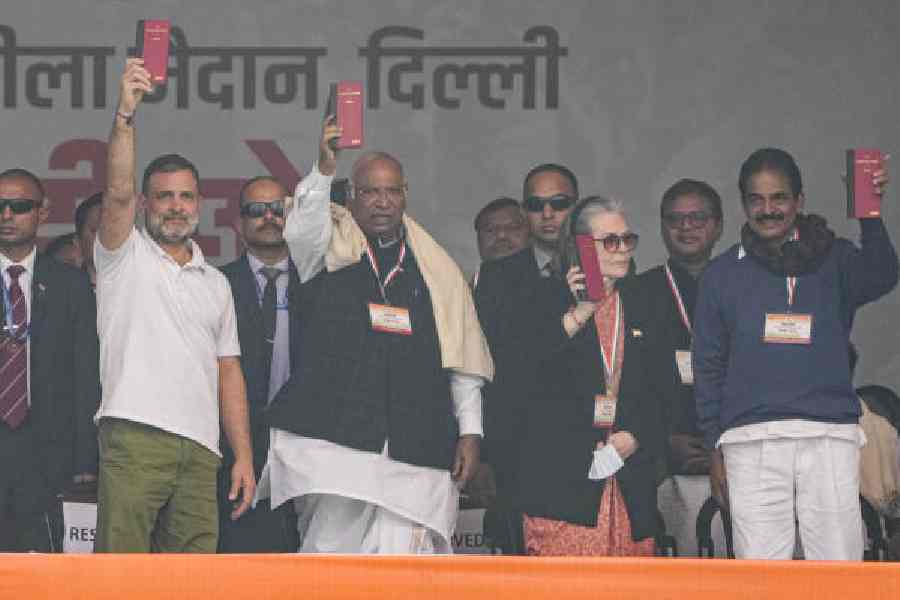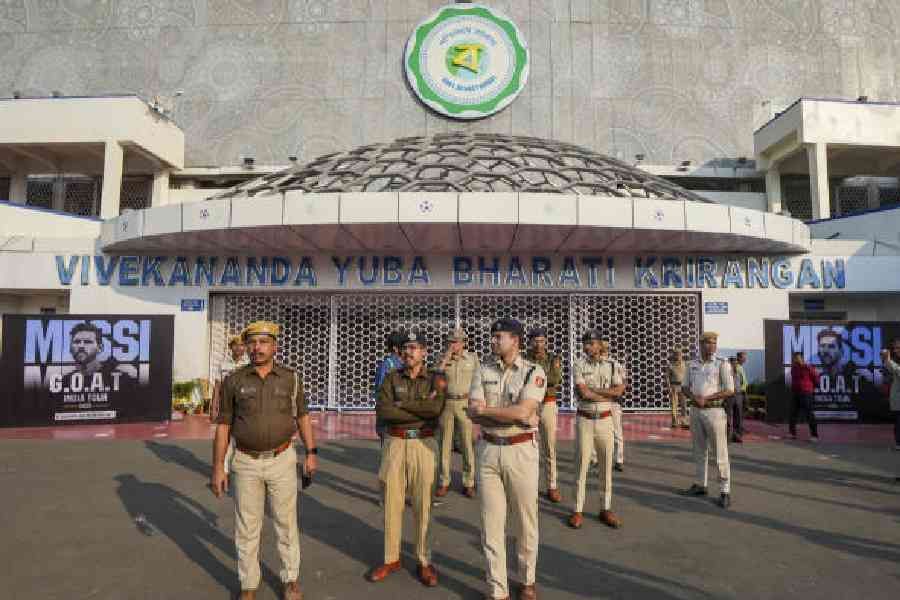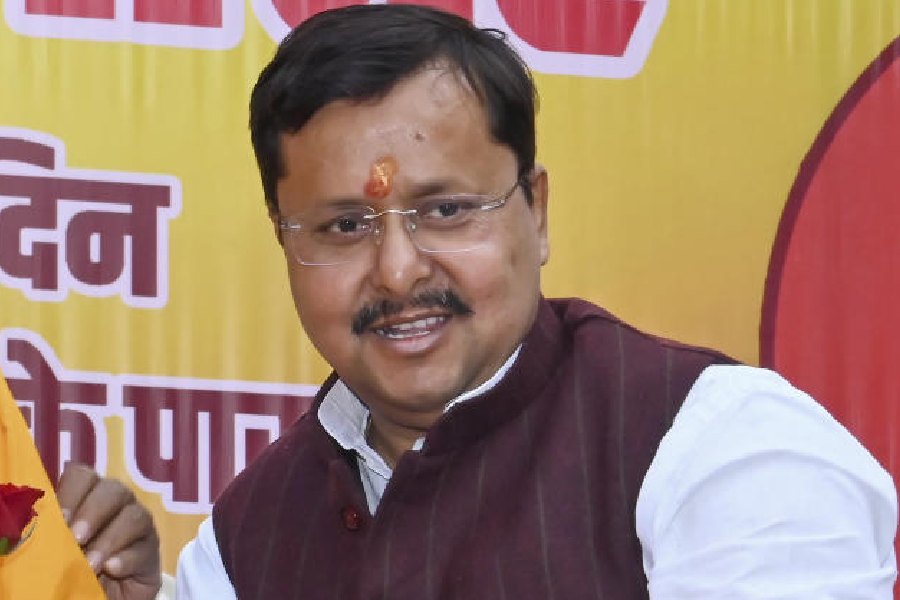Warangal, located about 150km northeast of Hyderabad, once served as the capital of the mighty Kakatiya dynasty. Over the centuries. the medieval citadel has turned into a modern city and serves as the headquarters of the district by the same name. A mighty fort and a couple of temples have survived the test of time and still stands today as the reminder of the good old days of Kakatiyas.
History of Warangal Fort
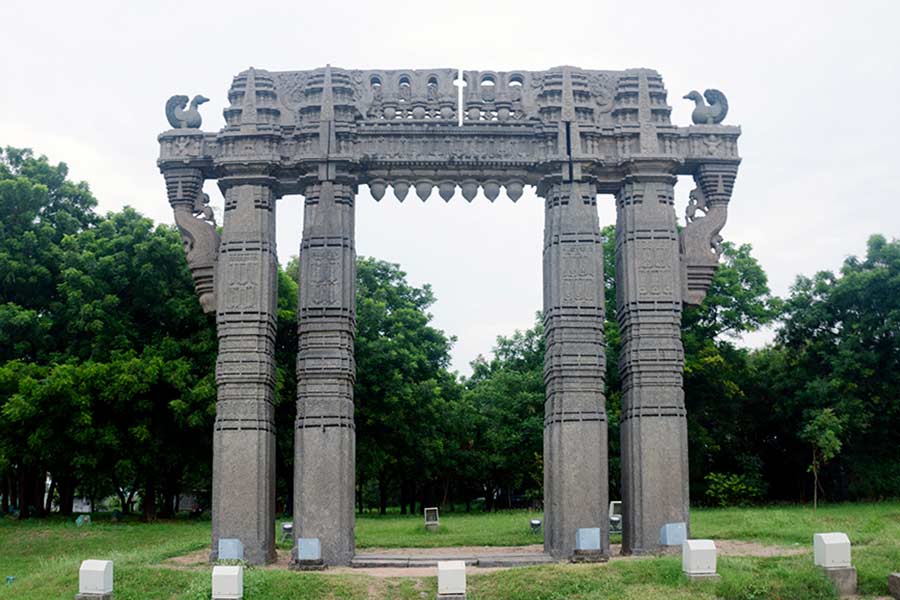
One of the four ‘Kirti Torans’ (victory gates) on the Warangal Fort central complex
It is believed that the construction of Warangal Fort was initiated by the Kakatiya ruler Ganapatideva (reign: 1199 to 1262 AD). It was further expanded and strengthened by his successors, Rudrama Devi (reign: 1262 – 89) and Prataprudra II (reign: 1289 – 1323). The Prataprudra II reign was marked by successive invasions of the Khiljis and Tughlags. The invasions not only left the Warangal Fort in ruins but also marked the end of the Kakatiya rule.
Warangal Fort today
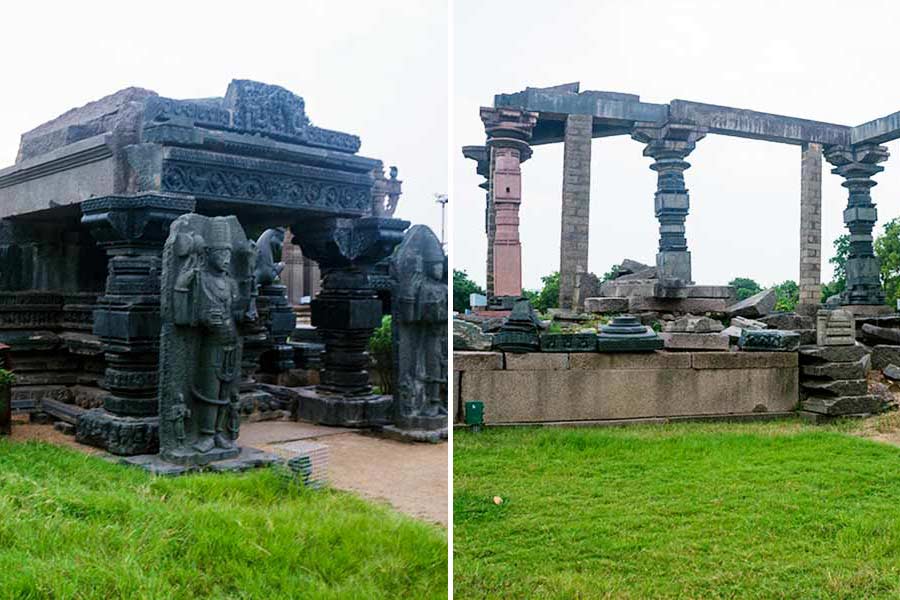
Structures of the central complex, Warangal Fort
Today, the fort stands on the south-eastern edge of the town complete with its layers of fortification and a central complex exhibiting the ruins. The fort today houses a modern-day settlement along with agricultural fields. But several structures of the bygone era have survived and stand as islands surrounded by agricultural fields or settlements. The main structures are:
- Swayambhu Temple Complex (central complex)
- Ekashila Temple
- Khush Mahal
- Konda Masjid
- Jogamaya Temple
- Varalamma Temple
- Venkataswar Temple
- Fortification walls, moats and gates
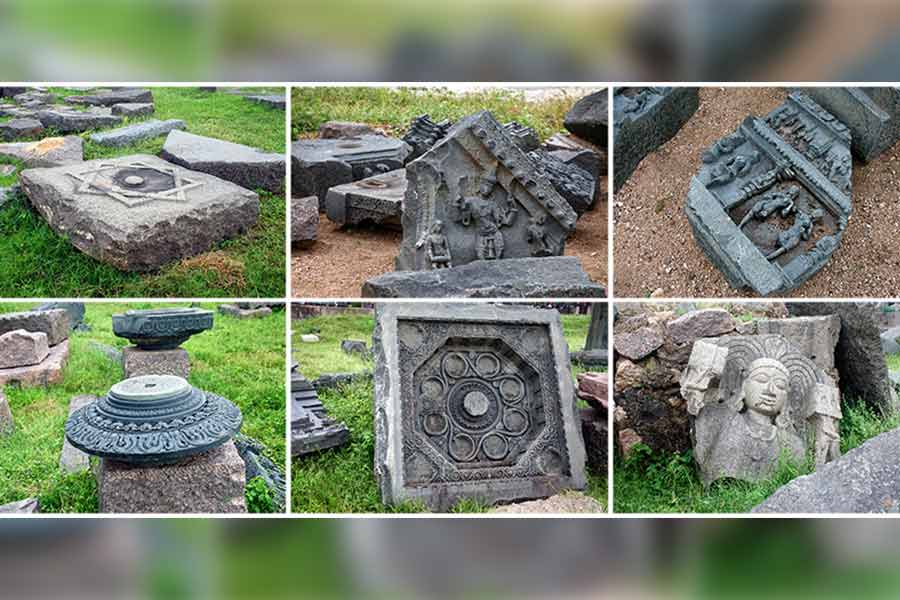
Assortment of broken sculptures displayed at the central complex, Warangal Fort
Swayambhu Temple Complex (central complex)
At the very centre of the fortified citadel stood the Swayambhu Temple, which was completely destroyed during the successive invasions. Today, the Archaeological Survey of India (ASI), the custodian of the fort, has turned the temple complex into an open-air museum.
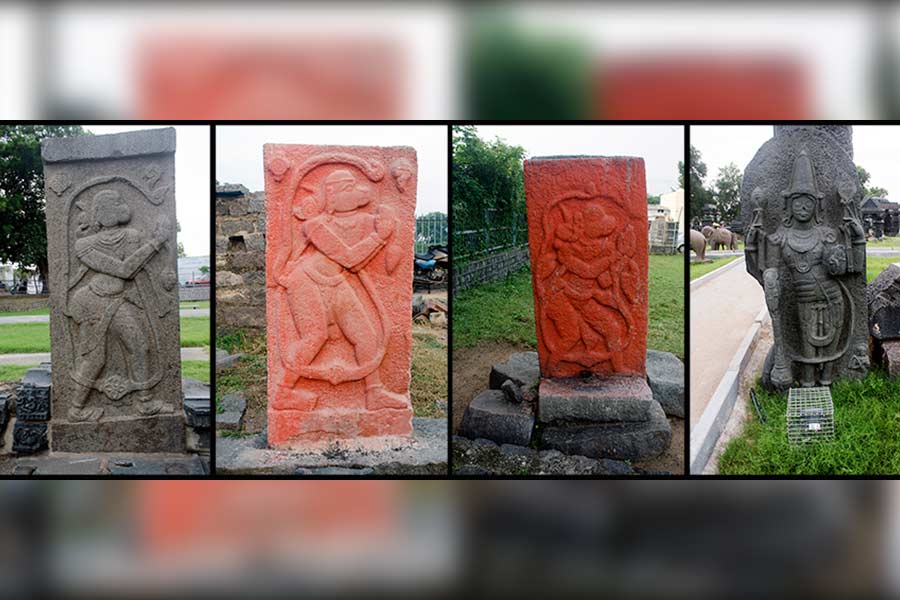
Assortment of stone relief work from Warangal Fort
The open-air museums consist of an assembly of ruined structures collected from various regions of the fort. Statues of Nandi the bull, elephants, yalis along with pillars, pavilions and broken sculpture parts form part of the open-air museum. But the centre of attraction of central complex are the four Kirti Torans (victory gates) that stood on the four cardinal directions of the Swayambhu Temple.
Each gate has twin pillars with angled brackets supporting a huge ornamental lintel. Today, the gates are part of the Warangal district emblem and also feature in the emblem of National Institute of Technology (NIT) Warangal. Its replica can be found throughout the town.
Ekashila Temple
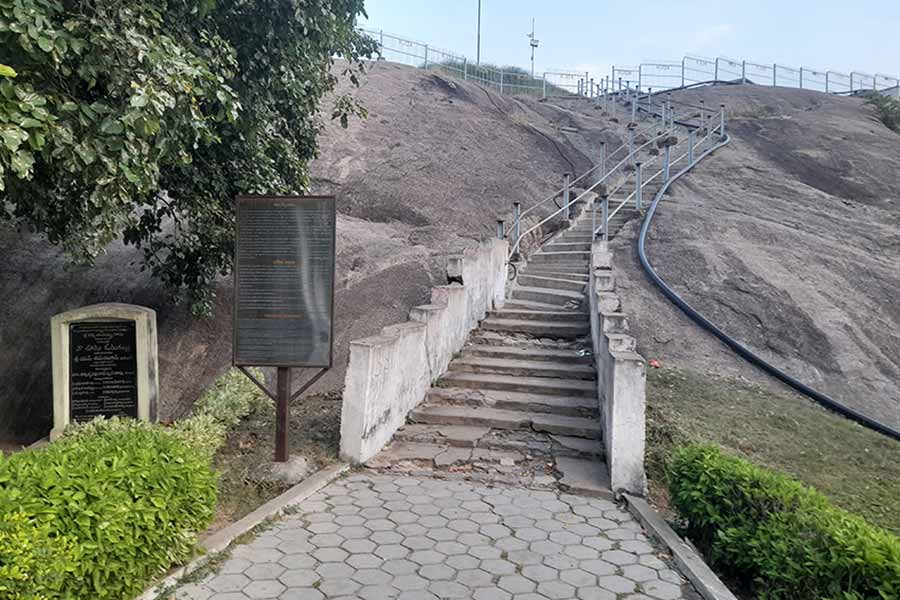
Stairway leading to Ekashila Temple
The name literally translates into one-rock hill and the temple stands on a rocky outcrop located south-east of the central complex. The route to the base of the hill passes through a garden complete with a children’s park. A meandering set of steps leads to the top of the hill housing a small shrine built in typical Kakatiya-style along with a watch tower. It gives one a grand view of the surroundings, which includes a lake on the western edge. The place offers a breath-taking view of the setting sun.
Khush Mahal
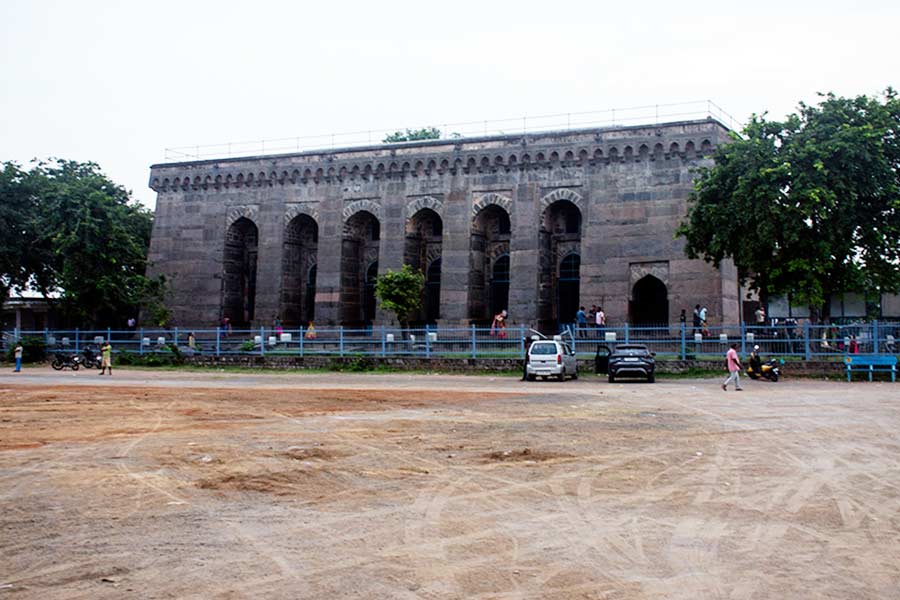
This is located west of the central complex and dates to the Tughlaq era. It is a large hall with sloping walls and arches. The main chamber is a spacious hall with high ceilings. The hall and the complex house several ruined statues collected from various parts of the Warangal Fort.
Konda Masjid
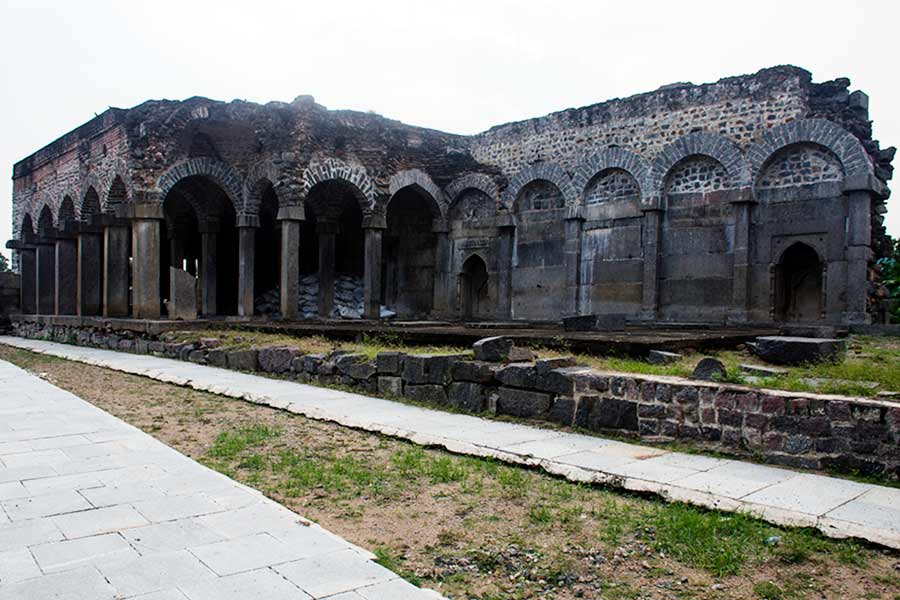
This is another Islamic structure of the Warangal Fort. This also dates back to the Tughlaq period. It is in complete in ruins and large chunk of the structure has collapsed.
Jogamaya Temple
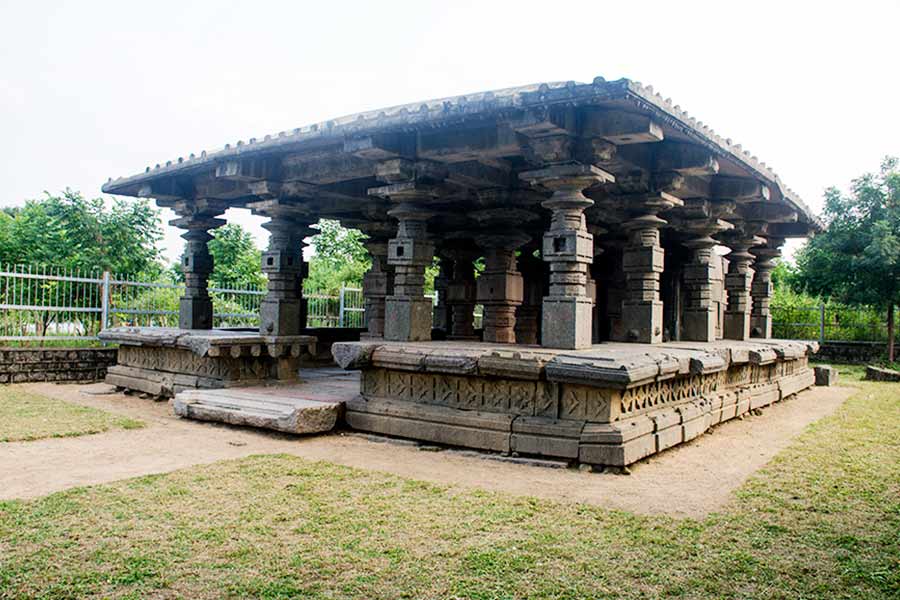
This is located east of the Konda Mosque and is located inside a walled complex. The temple follows the typical Kakatiya temple architecture complete with a spire and pillared hall.
Varalamma Temple
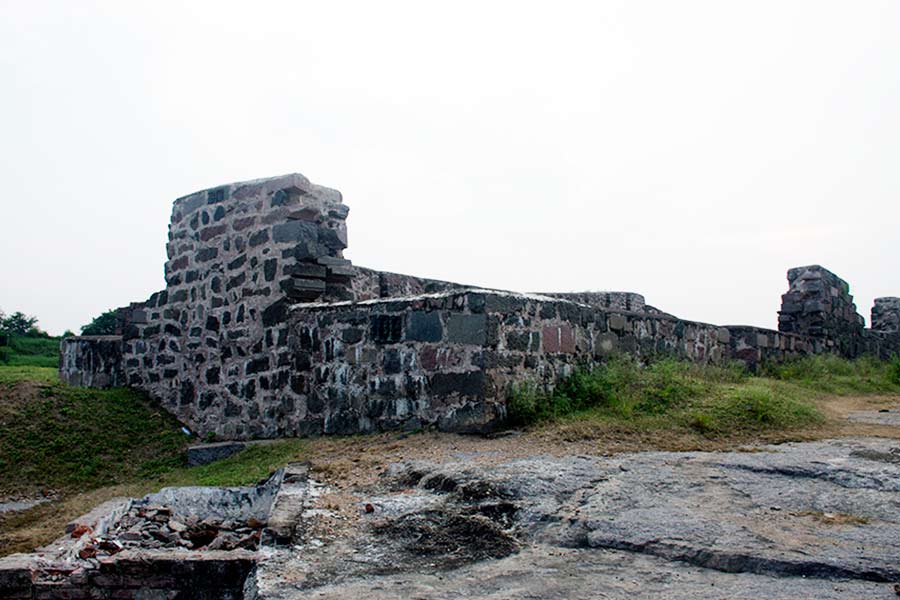
This is located near the inner south gate and is in total ruins. It covers a large area and chunks of the structure has long collapsed.
Venkataswar Temple
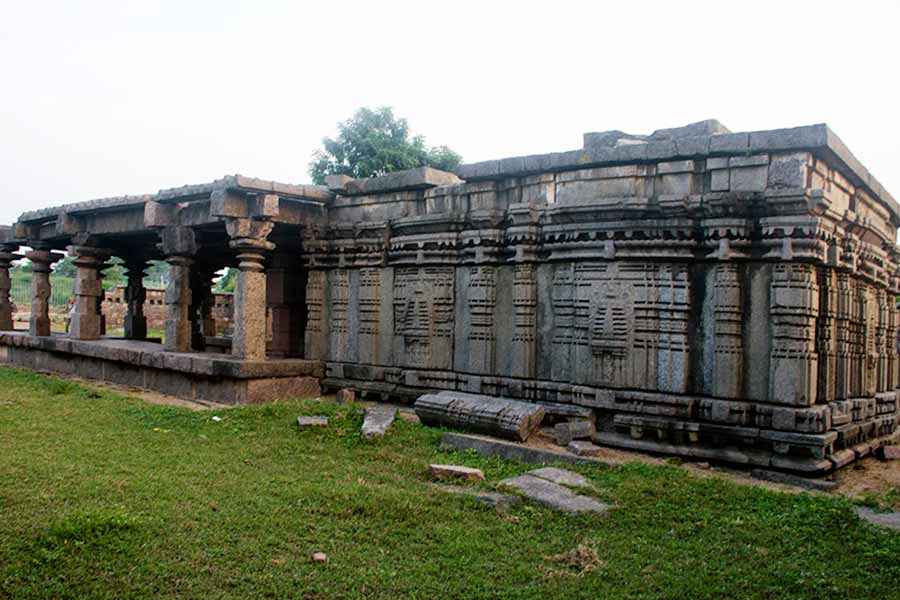
This lies near the inner eastern gate and is surrounded by agricultural fields. The temple stands inside a walled enclosure. The temple consists of a pillared hall and an inner sanctum.
Fortification walls, moats and gates
Modern satellite images shows two layers of fortification of the Warangal Fort. Each is complete with walls and moats and have four gates on the inner and outer walls. The eight gates face the four cardinal directions.
Beyond the fort
The history of Warangal stretches beyond the fort and include a couple of temples, which include
1. Thousand pillar temple
2. Bhadra Kali Temple
Thousand-pillar temple
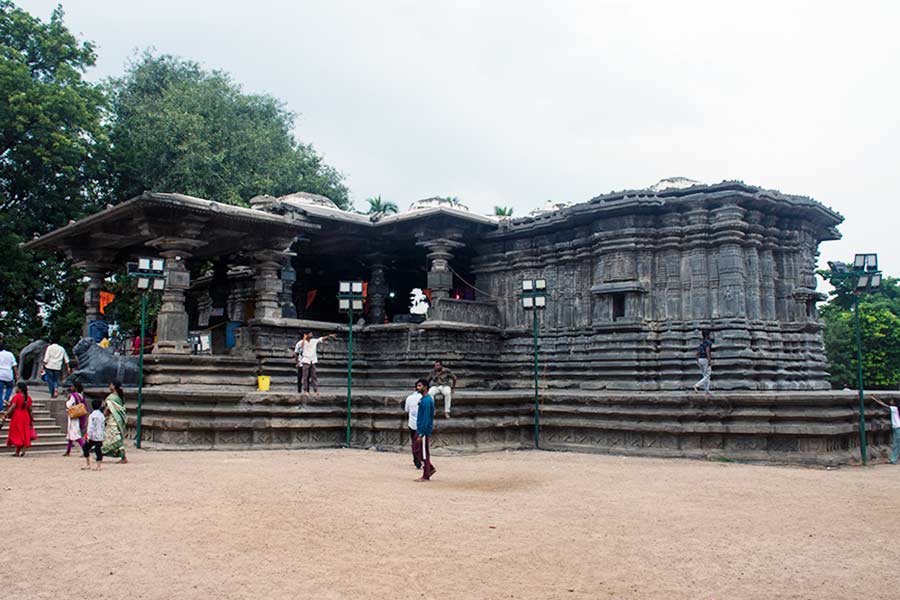
Officially known as the Rudreswara Temple, the thousand-pillar temple was constructed during the rule of Kakatiya king Rudradeva (reign: 1158 – 95). The temple has 1,000 intricately decorated pillars perforated screens, exquisite icons and a host of sculptures. The star shaped temple has three shrines dedicated to Shiva, Vishnu and Surya. The complex also houses a massive monolith Nandi the bull along with a ruined pavilion.
Bhadra Kali Temple
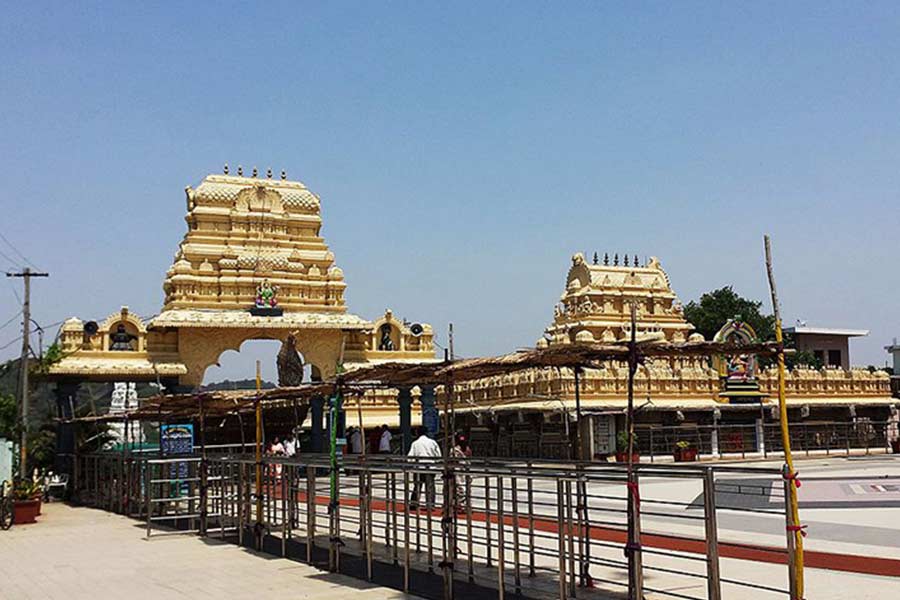
Wikimedia Commons
This temple predates the Kakatiyas and is believed to be constructed by the Chalukya in 625 CE. Later, the Kakatiyas further expanded it. With the fall of the Kakatiyas the temple lost it prominence. It was renovated in 1950 and given a new lease of life. Today, nothing remains of the temple’s antiquity. It is an active temple attracting thousands of devotees.
Quick info
· Tickets: Tickets
are only needed for the central complex and Ekashila Temple of the Warangal
Fort. The same ticket provides access to both.
Indian: Rs 25 (cash) and
Rs 20 (online)
Foreigner: Rs 300 (cash) and Rs 250 (online)
Videography charges Rs 25
· Light & Sound show
o Timings: Telugu: 6.30pm – 7.20pm (Sept – Feb) 7–7.50pm (March – August) English/Hindi: 7.30pm – 8.20pm (Sept – Feb) 8-8.50pm (March – August)
o Tickets: Adult: Rs 40 and Child: Rs 30
· Photography:
o Fort: Allowed
o Thousand-pillar temple: Allowed in the complex but not inside the temple
o Bhadrakali Temple: Not allowed

